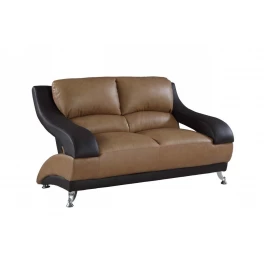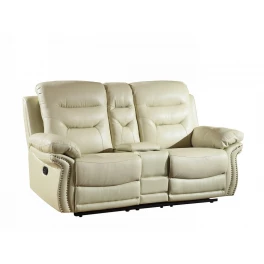The terms for interior design can be confusing for the novice designer. Who knows the difference between French Country or Bohemian? Should you set out a plate of croissants? Toss around peace and love signs? What about Modern or Contemporary? Aren’t they the same thing?
With all the labels that exist, it’s no wonder that many people are perplexed at how to define an interior design style. However, wouldn’t it be nice to confidently say, “I decorated my living room with a rustic feel, and my dining room is reminiscent of industrial style.” Read on if you would like to be in the know with interior decorating terminology, what those labels reference, and how to determine interior design styles. These are eight designs people love.
The Big Three
Minimalist. Contemporary. Modern. These three interchangeable molds are often considered the exact same style or mistaken for the other, but they’re distinctly different ways of decorating. If anything, they are the perfect patterns for how to mix interior design styles because they are so similar.

Photo by Dirk Ercken on Shutterstock
When creating modern home décor, the go-to visuals are sleek, exact lines and uncluttered spaces. Contemporary is more fluid, with curving lines and a blend of comfort and functionality. While contemporary employs clear space with wide open rooms, usually accented by neutral colors, modern is a contrast between dark and light with the use of granite, glass, and metals.
Minimalist fits in between these two layouts with the straight lines and clutter-free areas of modern design, but the lighter colors and warmth of contemporary arrangements. There’s no right or wrong between these three approaches, but understanding what you’re doing with them is the key to perfectly executing their look.
The Nordic Way
As is the trend with many popular interior designs, Scandinavian utilizes space, light, and air. It’s an important aspect of this method for the space to be both functional and attractive. Scandinavian interior design style calls for a minimalist approach to its space with a fashionable twist. Everything in this form is an artistic expression; from the plain, unobtrusive light fixtures to the open windows, and from its neutral colors to its many mirrors, Scandinavian emphasizes comfortable elegance and open space.

Photo by Archi_Viz on Shutterstock
The Industrial Space
Similar to modern and minimalist with their open space, the industrial design style goes the extra mile for the appearance of simplicity. Exposed pipes, brick walls, bare beams, and visible ducts are all part of this eclectic style, which allows for a raw, edgy look.

Photo by Photographee.eu on Shutterstock
Not only does industrial allow its users to create a carefree atmosphere, but this style also has the same effect as a blank canvas. There are few accents that don’t mesh well with industrial layouts, but abstract art and pop culture are popular choices within this style.
It’s Tradition
Traditional is what we are all used to. It’s comfortable, simple, and what we usually see in our favorite family movie, most often in the living room. Traditional aims for the lackluster, though that unpresuming look actually takes a lot of effort. This mode is what we see with furniture store layouts: dated, upholstered furniture, comfy throws, muted colors and patterns, and perhaps an idyllic frame above the fireplace. This isn’t the room where you want to showcase your art deco or 3-foot metallic statue. Instead, it’s the place where you would like to hang out with your family, play board games, or perhaps, watch your favorite television show.

Photo by Lorraine Kourafas on Shutterstock
Transition to Comfort
If you have ever found yourself asking what transitional interior design style means, know that you are not alone. Well, the short answer is that this style is a combination of both traditional and contemporary techniques, meaning comfort crossed with clean, rounded or straight lines, elegantly understated furniture, and plenty of natural light that executes an ageless atmosphere.

Photo by JAvani LLC on Adobe Stock
Bohemian Splendor
The beauty about bohemian interiors is that they are uninhibited and have only a few rules. If you like bright or earthy colors, multi-hued fabrics, and plants or knickknacks from around the world, all scattered with a studiously carefree method around your room, you’ll likely enjoy a bohemian look. Fabric choices for bohemian home décor are usually an eclectic mix of patterns and textures. Though it may seem like bohemian styles require a serious overhaul of your space, you can implement this method with a few choice pieces of fabric and a green thumb.

Photo by Photographee.eu on Shutterstock
Rustic Beauty
Standing as the ideal for raw and natural, rustic layouts emphasize nature by using a motif of lightly stained or unstained wood, heavy masculine furniture, and muted browns. The fabric is often simple and textural, such as canvas or burlap. Handcrafted pieces, like wicker baskets or carved chests, serve as the necessary accents for this space. Over recent years, rustic has become lighter in hues, and even applied touches of richly-colored fabrics in the form of throws or a single piece of furniture. The beauty of rustic designs is that they are automatically welcoming to most individuals, and remain reminiscent of a cold winter night in a mountain cabin.

Photo by Photographee.eu on Shutterstock
Having a clear understanding of the norms for a few styles can ease the stress of trying to decide what direction to take when you’re decorating or re-decorating your space. A few parameters go a long way with understanding patterns or uniformity for your rooms. Regardless of your choices, it’s important to remember that your home should be the main place where you’re comfortable, so when making your decisions, keep what pleases you at the forefront of your priorities.

























